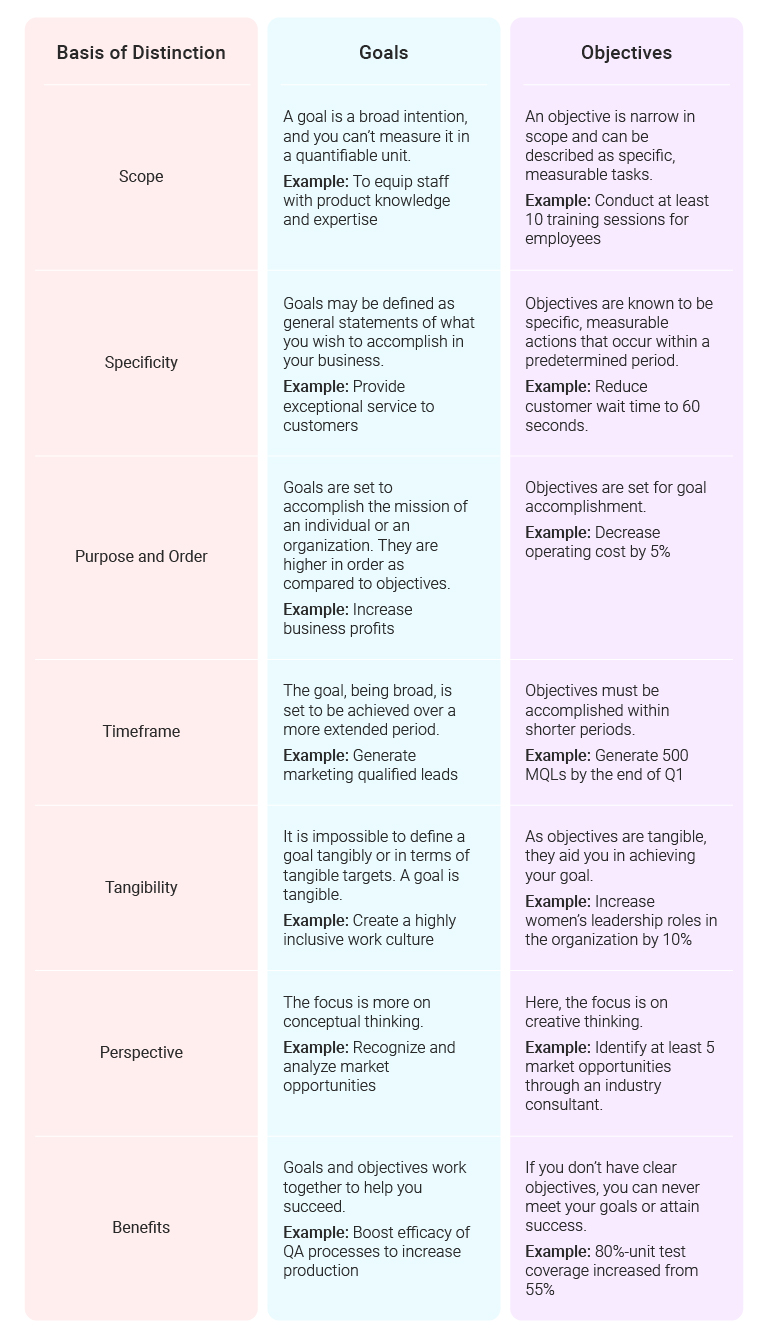March 23, 2022
Goals vs. Objectives: Differences and Examples

Objectives and Goals are the two terms used interchangeably to mean the desired results a person or business wishes to accomplish. But there are considerable differences between goals and objectives. Strategize by establishing and employing clear objectives and defined goals. Only then can you bring success to your organization.
This blog highlights key differences between an objective and a goal with examples that better explain these differences. Let’s begin with the fundamentals.
What are Goals?
A goal may be defined as a short statement of a favorable outcome that you want to attain over a long period. The period may vary from 3 to 5 years. Goals focus on the desired results without identifying the methods employed to obtain the intended outcome. For instance, revenue growth and increased efficiency are corporate goals.
What are Objectives?
An objective refers to a specific, actionable target that must be accomplished in a few years, say a year or even less. As objectives are created to meet goals, they define the activities involved in achieving a goal. Enhancing brand awareness and expanding market reach to capture our audience uniquely can be an objective for Marketing Leadership in an organization.
Goals vs. Objectives

Explore a few of HR goals and objectives examples.
Now that we learned the differences between goals and objectives and examples, let us look at how Objectives and Key Results (OKRs) act as a powerful goal-setting methodology. Since Google adopted and began to use OKRs, way back in 1999, the framework has revolutionized goal-setting. Today, the world’s most renowned companies, including LinkedIn, Twitter, Oracle, and Airbnb, to name a few, employ the OKR tool to align their employees’ goals with those of the organization.
In a generic goal-setting framework, a company sets higher-end goals, and employees create their objectives, but they are not aligned to achieve that higher-end organizational goal. Remember, visibility plays a critical role in aligning teams. Most organizations fail to have a structure, so they cannot create a shared set of objectives across departments. Only a few such organizations know how to measure their results to achieve those objectives.
Contrary to this, in an OKR framework, each level of the organization sets its OKRs and communicates them down through individuals, teams, and departments to align to the organizational objective. Every objective and key result is visible to everyone in the organization, creating trust and visibility. As we all row in the same direction, together, we accomplish more.
Well-aligned organizations further deeper employee engagements and make faster decisions, leveraging their resources to the optimal.
Don’t Want to Miss on Your Goals This Year?
In the goals vs. objectives table above, both are distinct but complement each other. In the absence of objectives, you can never realize the end goal. The bottom line for you is maintaining visibility, alignment, and progress on your OKRs. Employing a tool like Unlock: OKR keeps teams’ objectives and key results strategically aligned to the top-level objectives, pacing goal delivery, and driving extraordinary results.